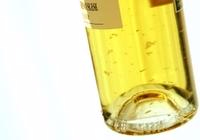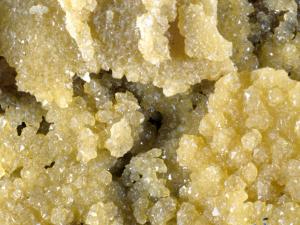Tartaric Crystals
WINE DIAMONDS OR CRYSTALS IN A BOTTLE
![]()
 "What is that stuff in my wine?". What people are really asking is, what are the white crystals (sometimes called snow flakes or "wine diamonds") in my wine? Well here is the explanation.
"What is that stuff in my wine?". What people are really asking is, what are the white crystals (sometimes called snow flakes or "wine diamonds") in my wine? Well here is the explanation.
Wine is made up of many different compounds and one of these compounds is acid. This acid comes primarily in two different forms: tartaric and malic. Malic is found in many different fruits while tartaric is mostly found in grapes.
Some of the tartaric acid can further be broken down into another form, called potassium bitartrate, which is also know as "cream of tartar". Because this acid is only partially soluble (meaning it doesn't completely dissolve in wine even though initially it may appear to), it eventually crystallizes and begins falling out of the wine over time. This process can be sped up by low temperatures, which is what you see in the bottom of some of our white wine bottles.
 Tartrate crystals can sometimes accumulate in the bottom of bottles or on the underside of corks. These are naturally occurring and are not a fault.
Tartrate crystals can sometimes accumulate in the bottom of bottles or on the underside of corks. These are naturally occurring and are not a fault.
Sometimes I will hear the follow up statement of "I have never seen it in any other wine except yours" which probably, for most of us, is true.
The reason you do not see this too often is that most wineries put their white wines through a process called "cold stabilization", where the wine is chilled for about two weeks at temperatures close to freezing. This process speeds up the the crystalization process and after the wine is filtered, there will be no more wine crystals in the wine and most importantly, no customers asking "what are these crystals in my wine?" Most wineries would cold stabilize wines just to avoid that one question.
There is a couple of reasons why we choose not to cold stabilize our wines. First, if we cold stabilize, we could alter the taste and quality of our product. Secondly, we believe in minimal processing of our wine, which means limiting as much as possible anything that is not 100% neccesary to make our products. Finally, cold stabilizing is very energy intensive and we try, for the sake of the enviorment (and our wallets) to keep our energy impact low.
What we tell people is to decant the wine or use a filtered before drinking if you are concerned about the crystals in the wine. BUT REST ASSURED, THERE IS NO REASON TO BE CONCERNED WITH INGESTING THOSE CRYSTALS.
Information Found LINK
